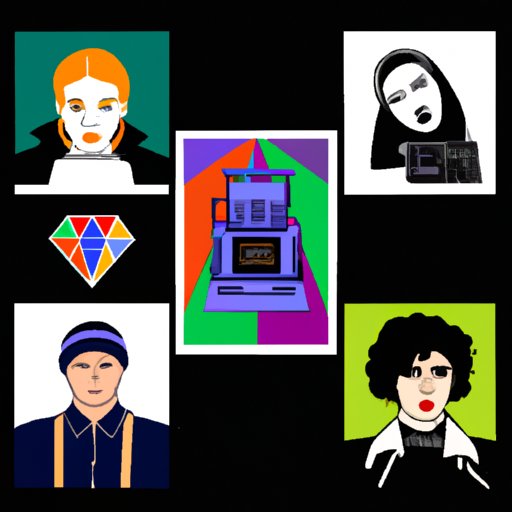I. Introduction
The 1990s was a unique era for fashion, marked by a diverse range of styles and trends that continue to influence the fashion industry today. This period was greatly influenced by various factors, including historical and cultural events, pop culture icons, fashion designers, street style, technology, and the emergence of supermodels. In this article, we will examine these factors and their impact on fashion in the 1990s.
II. History and Cultural Events
The historical and cultural events of the 1990s had a significant impact on fashion trends and styles. The end of the Cold War, the rise of multiculturalism and globalization, and the popularity of the rave scene are prime examples of these events. For instance, the emergence of new cultures and the end of geopolitical tensions paved the way for diverse cultural expression through fashion. Similarly, the popularity of raves resulted in a flourishing of neon colors and oversized clothing.
III. Music and Pop Culture
The impact of popular music and movies on fashion during the 90s cannot be overemphasized. Celebrities like Will Smith, Tupac, and The Spice Girls embodied the fashion sensibilities of the 90s, inspiring a generation of young people across the world. In addition, the music genres of hip hop, grunge, and other music genres inspired different styles in the 1990s. Pop culture icons such as Madonna, Michael Jackson, and Kurt Cobain were influential in shaping fashion trends during this era.
IV. Fashion Designers
Fashion designers were major trendsetters in the 1990s, with their designs impacting the industry in significant ways. Marc Jacobs, Tom Ford, and Alexander McQueen were among the most influential designers of the time, generating some of the most memorable styles of the decade. Their approach to fashion combined classic styles with a modern twist, while using innovative patterns, fabrics, and accessories. Their work continues to influence the industry today.
V. Street Style
Street style was a prominent feature of 1990s fashion. The rise of urban street styles like grunge, hip hop, and skater fashion among young people made it into the mainstream, shaping the fashion of the time. Today, street style continues to shape fashion trends, with many people adapting and creating their unique style statements.
VI. Technology
The innovations in manufacturing, textile design, and digital communication technology changed the way people consumed fashion in the 1990s. For instance, the emergence of the internet changed how people accessed and shared information about fashion trends. Technological advances, such as the widespread use of zippers instead of buttons, impacted the design and manufacture of clothing.
VII. Emergence of Supermodels
The supermodels of the 1990s played a significant role in shaping fashion trends and styles. Cindy Crawford, Naomi Campbell, and Kate Moss were at the forefront of this era’s fashion scene. Their unique beauty and fashion sense made them fashion icons, inspiring many of the styles of the time. Their influence is still visible in the industry today.
VIII. Conclusion
The influence of the 1990s on fashion is still visible in the industry today. The historical and cultural events, pop culture icons, fashion designers, street style, technology, and the emergence of supermodels all worked together to shape the fashion trends and styles of the 1990s. Understanding these factors and their influence helps us appreciate the richness and diversity of 1990s fashion, and how it continues to inspire the industry.
(Note: Is this article not meeting your expectations? Do you have knowledge or insights to share? Unlock new opportunities and expand your reach by joining our authors team. Click Registration to join us and share your expertise with our readers.)
